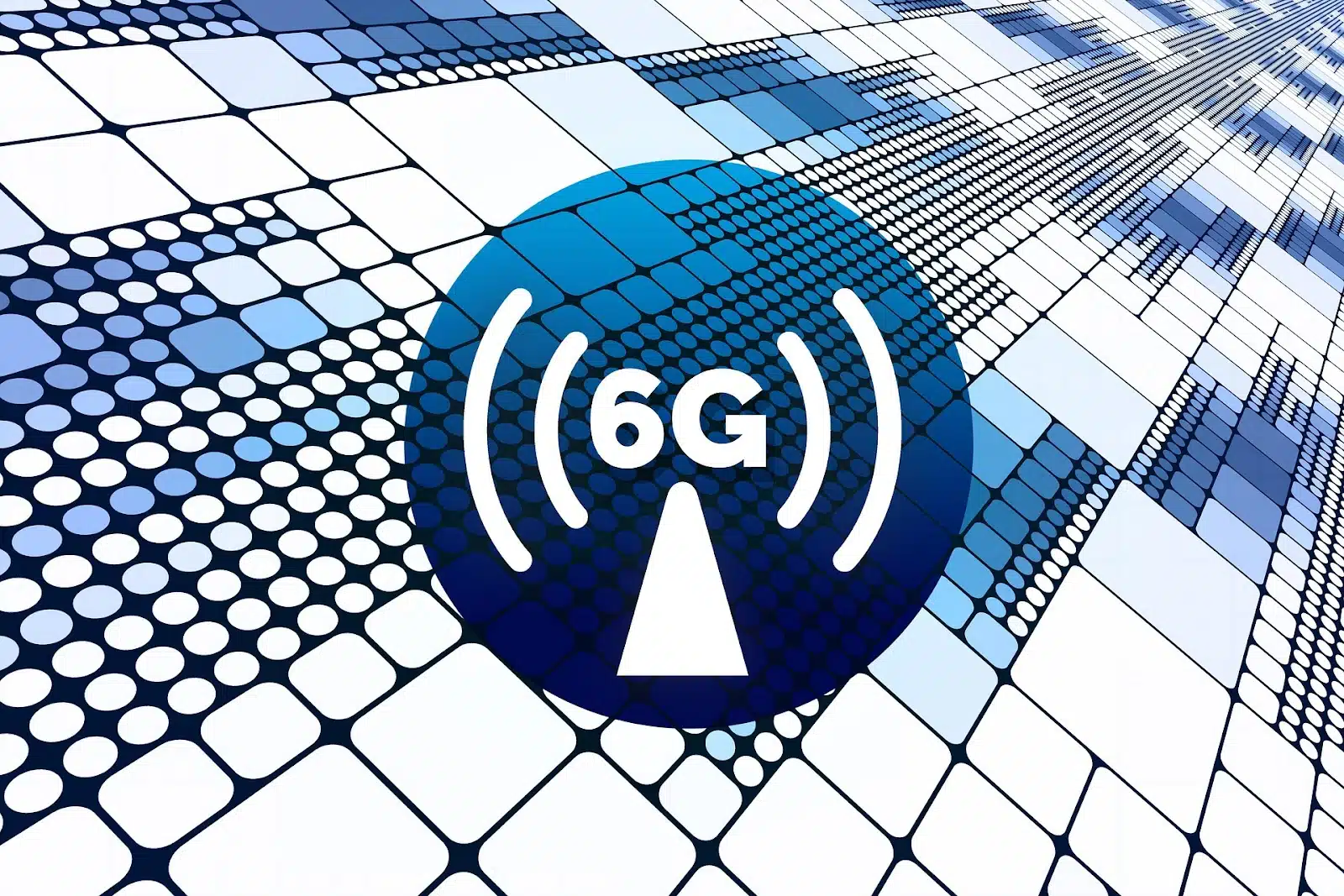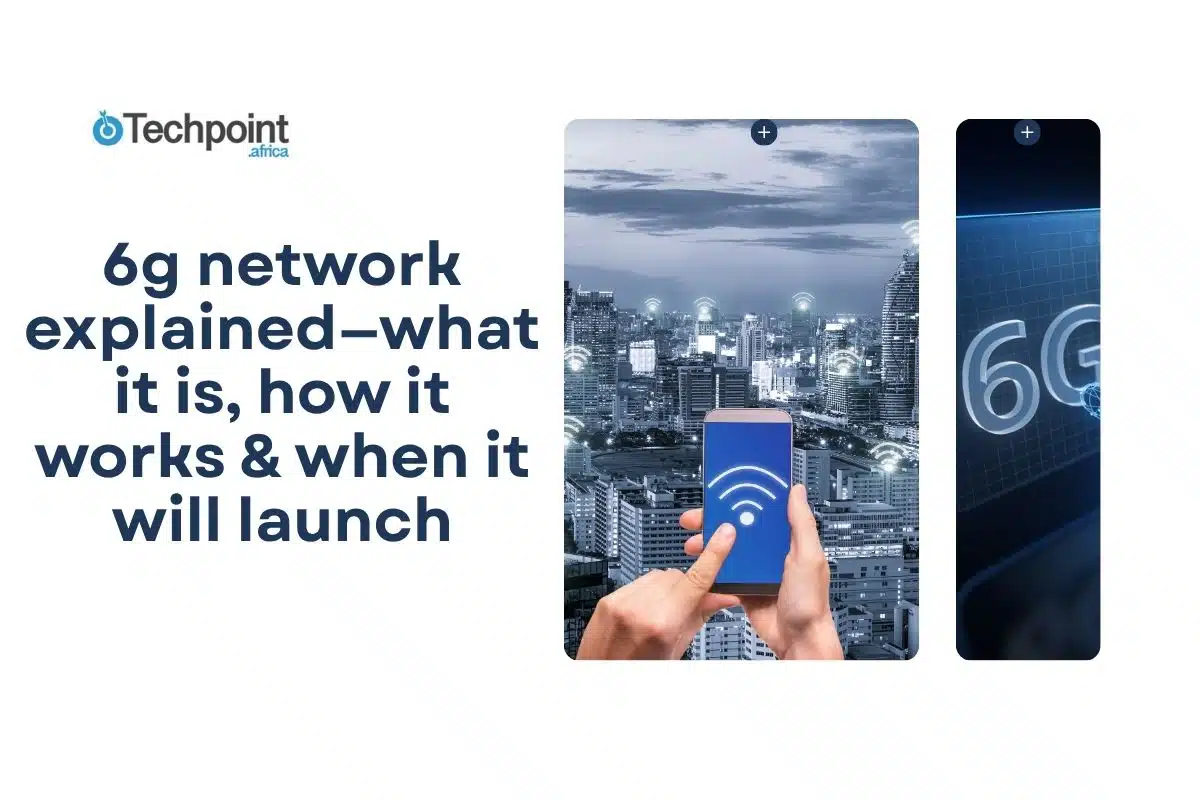Anything better or superior is always a step above the rest.
In telecommunications, 5G came right through the stage and took center space from 4G in 2019. It has served on since then with its ultra-fast speeds, low latency, and massive device connectivity. But because technology has no stage locks and favorites, the attention shifted to 6G, a groundbreaking concept claimed to take over from 5G in greater stripes. As we look ahead, the 6g network is poised to redefine connectivity.
While 6G is still in development and not yet available, it already holds space in the future of connectivity. So, while you and I wait to experience this, here’s everything you need about it. Starting with a full-fleshed insight into what it is, how it works, when it’ll be launched, and a lot more important stuff you wouldn’t risk not knowing.
Understanding the 6g network will be essential for anyone looking to stay ahead in technology.
Understanding the 6g network will be essential for anyone looking to stay ahead in technology.
Read on to know more!
What is 6g?

6G is the sixth generation of cellular network technology, designed to succeed 5G by offering vastly improved data speeds, ultra-low latency, and intelligent connectivity. While 5G introduced groundbreaking enhancements over 4G [such as faster speeds, lower latency, and support for massive IoT], 6G aims to push these boundaries even further.
Unlike previous generations that focused primarily on faster mobile broadband, 6G envisions a fully integrated, intelligent communication system that merges communication, sensing, and computing into a unified platform. It will operate on much higher radio frequencies, including terahertz (THz) bands, which offer wider bandwidths and higher data capacities than the millimeter-wave frequencies used in 5G.
6G will also deeply embed artificial intelligence (AI) and machine learning into its network architecture, enabling self-optimization. These autonomous networks can make real-time decisions without human intervention, leading to a more efficient, secure wireless system.
How will 6G work?
These forms how:
Spectrum and frequency bands
One of the defining technical aspects of 6G will be its use of new spectrum bands. While 5G operates mainly in sub-6 GHz and millimeter-wave frequencies (24 GHz to 52 GHz), 6G will extend into the terahertz spectrum (0.1 THz to 10 THz). This shift to THz frequencies will allow for ultra-high data rates, potentially reaching up to 1 terabit per second (Tbps), approximately 100 times faster than 5G.
However, higher frequencies come with challenges such as shorter range and greater susceptibility to obstacles. To overcome this, 6G will leverage advanced technologies like reconfigurable intelligent surfaces (RIS) and massive multiple-input multiple-output (MIMO) antenna arrays to direct and amplify signals dynamically, ensuring reliable coverage and capacity.
AI-driven network architecture
6G networks will be AI-native. This means AI will be a core component embedded at every network layer, not an add-on. AI algorithms will autonomously handle real-time resource allocation, interference management, security threat detection, and network optimization.
For example, 6G networks will predict traffic patterns, optimize routing, and self-heal from faults without human input instead of manual network reconfiguration based on collected data. This will drastically improve efficiency, reduce latency, and enhance user experience.
Network layers and components
The 6G architecture will be highly integrated, combining terrestrial and non-terrestrial networks (NTN) such as low Earth orbit (LEO) satellites, drones, and high-altitude platforms to provide seamless global coverage. Key components include:
- User Equipment (UE): Devices like smartphones, AR/VR headsets, IoT sensors, autonomous vehicles, and industrial robots will connect to the network with real-time edge computing capabilities.
- Access Network (AN): Terahertz base stations, intelligent reflecting surfaces, and AI-based beamforming will optimize wireless communication.
- Core Network (CN): AI-driven core networks with software-defined networking (SDN) and network function virtualization (NFV) will manage authentication, mobility, and resource allocation, integrating quantum security mechanisms.
- Edge and Cloud Computing: Distributed AI-powered edge nodes will process data close to users, reducing latency and supporting real-time applications.
- Non-Terrestrial Networks (NTN): Satellite and aerial platforms will extend coverage to remote and underserved areas, ensuring ubiquitous connectivity.
6g unique features
Here is the chain of 6G capabilities:
| Feature | Description | Impact |
| Unparalleled Speed | Up to 1 Tbps data rates, 100 times faster than 5G | Enables instant downloads, real-time holographic communication, and ultra-HD streaming |
| Ultra-Low Latency | Latency in the microsecond range, far below 5G’s millisecond latency | Supports tactile internet, autonomous vehicles, remote surgery, and immersive gaming |
| Terahertz Communication | Utilizes THz frequencies for massive bandwidth and data capacity | Facilitates new applications requiring massive data throughput |
| AI-Driven Networks | AI and ML embedded in network management for autonomous operation | Enhances efficiency, reliability, security, and adaptability |
| Massive Connectivity | Supports up to 10 million devices per square kilometer, enabling billions of IoT devices | Powers smart cities, industrial IoT, and pervasive sensing |
| Enhanced Security | Integration of AI-based threat detection and quantum encryption | Provides robust protection against cyber threats and data breaches |
| Holographic Telepresence | Real-time, high-resolution 3D holograms for communication and entertainment | Transforms virtual meetings, education, and entertainment |
| Green Communication | Energy-efficient designs and AI-driven power management | Reduces environmental impact and operational costs |
| Seamless Multi-Platform Connectivity | Integration of terrestrial, aerial, maritime, and space networks for ubiquitous access | Ensures connectivity anywhere, including remote and mobile environments |
These features collectively will enable a new era of connectivity that supports faster and more reliable communication and intelligent, context-aware, and immersive digital experiences.
Where 6g will be applied and how
The capabilities of 6G will unlock transformative applications across multiple industries, driving innovation and efficiency in previously unimaginable ways.
Healthcare
6G’s ultra-low latency and high reliability will enable real-time remote surgeries with robotic precision, instant sharing of massive medical imaging data, and AI-assisted diagnostics. Wearable biosensors connected via 6G will continuously monitor patient health, enabling proactive care and reducing hospital visits.
Beyond traditional healthcare, 6G will facilitate advanced telemedicine platforms that integrate holographic communication, allowing doctors and patients to interact as if they were in the same room. Additionally, 6G-enabled AI will analyze vast genomics and personalized medicine datasets to tailor treatments to individual patients, improving outcomes and reducing costs.
Autonomous vehicles and transportation
With microsecond-level latency and ultra-fast data exchange, 6G will facilitate vehicle-to-everything (V2X) communication, allowing autonomous cars, drones, and public transport to coordinate safely and efficiently. This will improve traffic management, reduce accidents, and enable smart logistics networks.
Moreover, 6G will support real-time environmental sensing and predictive analytics, helping vehicles instantly adapt to changing road conditions. Intelligent transportation systems powered by 6G will integrate with urban infrastructure to optimize routes, reduce congestion, and lower emissions, contributing to sustainable city living.
Smart cities and IoT
6G will support billions of interconnected devices in smart cities, from environmental sensors and energy grids to public safety systems and intelligent infrastructure. This massive IoT ecosystem will optimize resource use, reduce pollution, and enhance urban living standards.
Integrating 6G with edge computing will enable real-time data processing for critical applications such as disaster response, traffic control, and energy management. Smart buildings will use 6G connectivity to autonomously regulate lighting, heating, and security, improving energy efficiency and occupant comfort.
Immersive media and entertainment
The leap in speed and latency will enable seamless streaming of ultra-high-definition (8K and beyond) video, real-time augmented reality (AR), virtual reality (VR), and holographic telepresence. This will transform gaming, remote collaboration, education, and entertainment experiences by making them more immersive and interactive.
For instance, 6G will enable fully immersive virtual concerts, interactive 3D classrooms, and holographic social interactions, blurring the lines between physical and digital worlds. Content creators will harness 6G’s bandwidth to deliver richer media experiences without buffering or lag.
Industrial automation and manufacturing
6G will enable wholly automated factories with real-time monitoring, predictive maintenance, and AI-driven robotics. This will increase productivity, reduce downtime, and improve quality control in manufacturing processes. The integration of 6G with advanced sensing technologies will allow factories to detect defects or inefficiencies instantly and adjust operations autonomously.
Additionally, 6G will facilitate digital twins [virtual replicas of physical assets] that enable simulation and optimization of manufacturing workflows, reducing costs and accelerating innovation.
Space and aerial communications
Integrating satellite and high-altitude platforms with terrestrial 6G networks will provide global broadband coverage, including remote and underserved regions. This will bridge the digital divide and enable new space exploration and aerial mobility applications.
For example, 6G will support high-speed data links for satellite swarms, enabling real-time Earth observation and climate monitoring. It will also facilitate communication between drones and autonomous aerial taxis, paving the way for new transportation modes and logistics solutions in urban and rural areas.
When will 6g launch?
6G is currently in the research and development phase, with global collaborations underway among academia, industry, and governments to define standards and technologies. While 5G is still being deployed worldwide, 6G development began around 2020 and is expected to mature over the next decade.
Most experts and industry leaders project that commercial 6G networks will be ready for launch around the early 2030s. For example, Ericsson and Nokia anticipate 6G commercialization by 2030-2033, following extensive testing and standardization efforts.
The timeline includes:
2020-2025: Fundamental research, technology trials, and initial standardization discussions.
2025-2030: Prototype deployments, spectrum allocation, and development of AI-native network architectures.
2030 onwards: Commercial rollout of 6G networks and devices, with gradual global adoption.
This phased approach ensures that the complex technical, regulatory, and economic challenges of 6G are addressed before widespread deployment.
6g noticeable challenges and considerations
While 6G promises extraordinary benefits and transformative capabilities, it also faces significant challenges that must be addressed to realize its full potential. These challenges span technical, economic, regulatory, and security domains, each requiring innovative solutions and global collaboration.
- Technical complexity
One of the foremost challenges in developing 6G is the technical complexity associated with operating at terahertz (THz) frequencies. Unlike the lower frequency bands used in previous generations, THz waves have very short wavelengths, which leads to these physical limitations:
Propagation and penetration: THz signals have limited range and poor penetration through obstacles such as walls, buildings, and even atmospheric conditions like rain or humidity. To maintain reliable connections, new propagation models and adaptive technologies must be developed.
Hardware innovation: Existing radio frequency (RF) components, antennas, and transceivers are not optimized for THz bands. Designing efficient, compact, cost-effective hardware capable of generating, transmitting, and receiving THz signals is a major engineering challenge.
Signal processing: The extremely high data rates and bandwidths require advanced signal processing algorithms and ultra-fast digital-to-analog and analog-to-digital converters. Managing interference and noise at these frequencies also demands sophisticated techniques.
Network architecture: To overcome the limited range, 6G networks will require ultra-dense deployment of base stations, integration with intelligent reflecting surfaces (IRS), and seamless handovers between terrestrial and non-terrestrial networks. Designing such a complex, multi-layered architecture is a significant challenge.
- Energy consumption
Operating at terahertz frequencies and supporting AI-driven autonomous networks will substantially increase energy consumption compared to previous generations. So these will follow:
High power demand: THz transmissions require more power to maintain signal strength over short distances. Additionally, AI algorithms running continuously for network optimization and security monitoring consume considerable computational resources.
Sustainability concerns: With the global emphasis on reducing carbon footprints, the increased energy demand poses environmental concerns. Without energy-efficient designs, the widespread rollout of 6G could contribute to higher greenhouse gas emissions.
Need for energy-efficient solutions: To address this, researchers are exploring energy harvesting technologies, low-power hardware components, and AI-based power management systems that dynamically adjust energy use based on network demand.
- Security and privacy
6G’s integration of AI, machine learning, and emerging quantum technologies introduces new security paradigms but also novel vulnerabilities such as:
AI vulnerabilities: While AI enhances network security through real-time threat detection and autonomous response, it can be a target for adversarial attacks, data poisoning, or manipulation, potentially compromising network integrity.
Quantum computing threats: Quantum computers could break many of today’s cryptographic algorithms, necessitating the development of quantum-resistant encryption methods to protect data confidentiality and integrity.
Privacy concerns: The massive data collection and pervasive sensing enabled by 6G raise significant privacy issues. Ensuring that user data is protected and used ethically will require robust policies, transparency, and advanced privacy-preserving technologies such as federated learning and homomorphic encryption.
Regulatory compliance: Maintaining security and privacy standards across different countries with varying regulations adds complexity to global 6G deployment.
- Infrastructure costs
Deploying 6G networks will require substantial investment in these new infrastructure:
Dense network deployment: To compensate for the limited range of THz signals, 6G will need ultra-dense networks with many small cells and base stations, significantly increasing capital and operational expenditures.
Non-terrestrial network integration: Incorporating satellites, drones, and high-altitude platforms into the 6G ecosystem demands new ground stations, control systems, and coordination mechanisms, all contributing to infrastructure costs.
Device upgrades: Consumers and enterprises will need to replace or upgrade devices to be compatible with 6G frequencies and protocols, which could slow adoption rates.
Return on investment (ROI): Telecom operators must balance these high costs with expected revenues, requiring innovative business models and partnerships to ensure financial viability.
Regulatory and spectrum management
Effective regulation and spectrum management are critical for 6G success. So, these need to be set in place:
Spectrum allocation: The terahertz bands are largely unregulated today. Allocating these frequencies for 6G use requires international coordination through bodies like the International Telecommunication Union (ITU) to avoid interference and ensure fair access.
Harmonization across regions: Different countries have varying regulatory frameworks and priorities, challenging global standardization. Harmonized standards are essential for device interoperability and economies of scale.
Health and safety regulations: The impact of THz radiation on human health is still being studied. Regulatory agencies will need to establish safety guidelines to address public concerns.
Policy and governance: Beyond spectrum, policies governing data privacy, security, and cross-border data flows must evolve to keep pace with 6G capabilities.
How businesses and industries should prepare for 6g
As 6G technology approaches commercialization in the early 2030s, businesses, and industries must begin strategic and operational preparations to fully leverage its transformative potential. The unprecedented speed, ultra-low latency, and AI-driven intelligence of 6G will reshape digital ecosystems, demanding proactive adaptation across sectors. Here are key areas companies should focus on:
Upgrading digital infrastructure
To handle the massive data rates and real-time processing demands of 6G, businesses need to invest in scalable and AI-capable network infrastructure. This includes:
- Network densification: Deploying more small cells, antennas, and edge nodes to improve coverage, reduce latency, and increase capacity, especially in urban and industrial environments.
- Edge computing: Integrating edge computing resources to process data closer to the source, reducing network congestion and enabling real-time analytics critical for applications like autonomous vehicles and industrial automation.
- Cloud-native architectures: Transitioning to flexible, software-defined networks that can dynamically allocate resources and integrate AI for autonomous management.
Such infrastructure upgrades will provide the foundation for 6G-enabled services and ensure seamless integration with existing 5G and legacy systems.
Adopting AI and IoT technologies
6G networks will be AI-native and support billions of interconnected IoT devices. Early adoption of AI and IoT sets the stage for a smoother transition and competitive advantage when 6G networks become available. So, businesses should:
- Integrate AI-driven analytics: Use AI to analyze data streams from IoT sensors, enabling predictive maintenance, operational optimization, and enhanced customer experiences.
- Expand IoT deployments: Accelerate IoT adoption across supply chains, manufacturing floors, smart buildings, and logistics to build a robust data ecosystem ready for 6G connectivity.
- Develop AI-enabled applications: Innovate new services that leverage 6G’s speed and intelligence, such as real-time AR/VR, autonomous systems, and smart city solutions.
Data security and privacy
The integration of AI and quantum technologies in 6G will introduce new security challenges. A proactive security posture will build trust and mitigate risks in the highly connected 6G operational space. Businesses need to gear up by:
- Implementing quantum-resistant encryption involves upgrading cryptographic protocols to safeguard data against future quantum computing threats.
- Deploying AI-based threat detection: Utilizing AI to detect and respond to real-time cyber threats ensures network resilience and data integrity.
- Ensuring privacy compliance: Adopting privacy-preserving technologies like federated learning and homomorphic encryption and aligning with evolving regulations to protect user data.
Collaborations and partnerships
No business can navigate the 6G transition alone. Strategic partnerships will be essential since such collaborations accelerate innovation, reduce costs, and ensure alignment with industry standards. These are those to have in thought:
- Telecom providers: Collaborate with network operators to understand infrastructure capabilities and co-develop tailored solutions.
- Technology innovators: Engage with AI, IoT, and hardware vendors to pilot 6G-enabled applications and devices.
- Research institutions: Participate in consortia and standards bodies to stay abreast of 6G developments and influence future technologies.
Workforce training and innovation culture
Preparing the workforce is critical to thoroughly enjoying 6G’s benefits. A skilled, innovative workforce will drive successful 6G adoption and business transformation. To get started:
- Upskill employees: Invest in training programs focused on AI, data science, network technologies, and cybersecurity to equip teams with the necessary skills.
- Foster innovation: Encourage a culture of experimentation and agility to rapidly develop and deploy 6G-enabled products and services.
- Set up a cross-disciplinary team: Build teams that combine technical expertise with business strategy to identify new opportunities enabled by 6G.
Exploring new business models
6G will unlock entirely new markets and revenue streams. Keep an eye out for this by:
- Identifying emerging opportunities: Explore sectors such as immersive media, holographic communications, autonomous systems, digital twins, and smart infrastructure.
- Developing flexible offerings: Create scalable, subscription-based, or usage-based services that leverage 6G’s high capacity and low latency.
- Using data as an asset: Monetize the vast data generated by 6G-connected devices through analytics, targeted marketing, and personalized services.
Now you know more!
6G represents the next giant leap in wireless technology, promising speeds up to 1 Tbps, microsecond latency, AI-driven autonomous networks, and seamless global connectivity. It will transform industries from healthcare and transportation to entertainment and smart cities, enabling applications that are currently unimaginable.
While still in the early stages of development, 6G is expected to launch commercially in the early 2030s, marking the beginning of a hyper-connected, intelligent digital era. As research progresses, 6G will enhance how we communicate and fundamentally reshape how we live, work, and interact with the world around us.
So, what do you think about 6G? Are you ready to explore how this next-generation technology will impact your industry and everyday life? Don’t Miss out on the opportunity to prepare your business and technology strategies for the exciting possibilities 6G will bring!
Stay updated with the latest 6G news by subscribing here to get first-stop news on this greatness as it evolves.
Frequently asked questions (faq) about 6g
1. When will 6G be commercially available?
6G is expected to launch commercially around 2030 to 2033. While research and development started in the early 2020s, global standardization, infrastructure deployment, and device availability will take several years. Early trials and prototypes are already underway in some countries.
2. How fast will 6G be compared to 5G?
6G aims to deliver data speeds up to 1 terabit per second (Tbps), which is roughly 100 times faster than 5G’s peak speeds of 10-20 gigabits per second (Gbps). This ultra-high-speed will enable new applications like real-time holographic communication and instantaneous data transfers.
3. What new technologies will 6G use?
6G will adopt several advanced technologies, including:
- Terahertz (THz) frequency bands for ultra-wide bandwidth.
- Artificial Intelligence (AI) is deeply integrated into network management and optimization.
- Reconfigurable Intelligent Surfaces (RIS) to improve signal propagation.
- Joint communication and sensing for environmental awareness.
- Quantum encryption for enhanced security.
4. Will 6G replace 5G immediately?
No, 6G will not replace 5G immediately. Instead, both networks will coexist for several years. 5G infrastructure will continue to serve many applications while 6G gradually rolls out, initially complementing 5G and eventually enabling new use cases requiring advanced capabilities.
5. How will 6G impact everyday life and industries?
6G will transform multiple sectors by enabling:
- Healthcare: Remote surgeries, AI diagnostics, and continuous health monitoring.
- Transportation: Autonomous vehicles with real-time communication.
- Smart Cities: Massive IoT integration for energy, safety, and traffic management.
- Entertainment: Immersive AR/VR and holographic experiences.
- Manufacturing: Fully automated factories with predictive maintenance.
6. What are the biggest challenges facing 6G development?
Key challenges include:
- Technical hurdles in operating at terahertz frequencies with limited range.
- Energy consumption concerns due to high-frequency transmissions and AI processing.
- Security and privacy risks from AI integration and quantum computing threats.
- Infrastructure costs for dense network deployment and device upgrades.
- Spectrum regulation requires international cooperation.
7. How can businesses prepare for 6G?
Businesses should start by:
- Upgrading digital infrastructure with AI-capable networks and edge computing.
- Adopting AI and IoT technologies to build smart operations.
- Enhancing data security with quantum-resistant encryption and AI-based threat detection.
- Forming strategic partnerships with telecom providers and tech innovators.
- Investing in workforce training focused on AI, data science, and network technologies.
- Exploring new business models leveraging immersive media, autonomous systems, and digital twins.
8. What frequency bands will 6G use?
6G will primarily operate in the terahertz (THz) spectrum, ranging from approximately 100 GHz to several THz. These frequencies offer extremely wide bandwidths for ultra-high data rates but require new hardware and signal processing techniques due to their limited range and penetration.
9. How low will 6G latency be compared to 5G?
6G aims to reduce latency to the microsecond level (sub-millisecond), which is about 10 to 100 times lower than 5G’s typical latency of 1 millisecond. This ultra-low latency is crucial for applications like tactile internet, autonomous control systems, and real-time holography.
10. What security and privacy concerns exist with 6G?
6G’s integration of AI and quantum technologies introduces new security challenges, such as:
- Vulnerabilities to AI-based cyberattacks.
- The need for quantum-resistant cryptography to protect data against future quantum computers.
- Privacy risks from pervasive sensing and massive data collection, requiring advanced privacy-preserving techniques and regulatory compliance.






